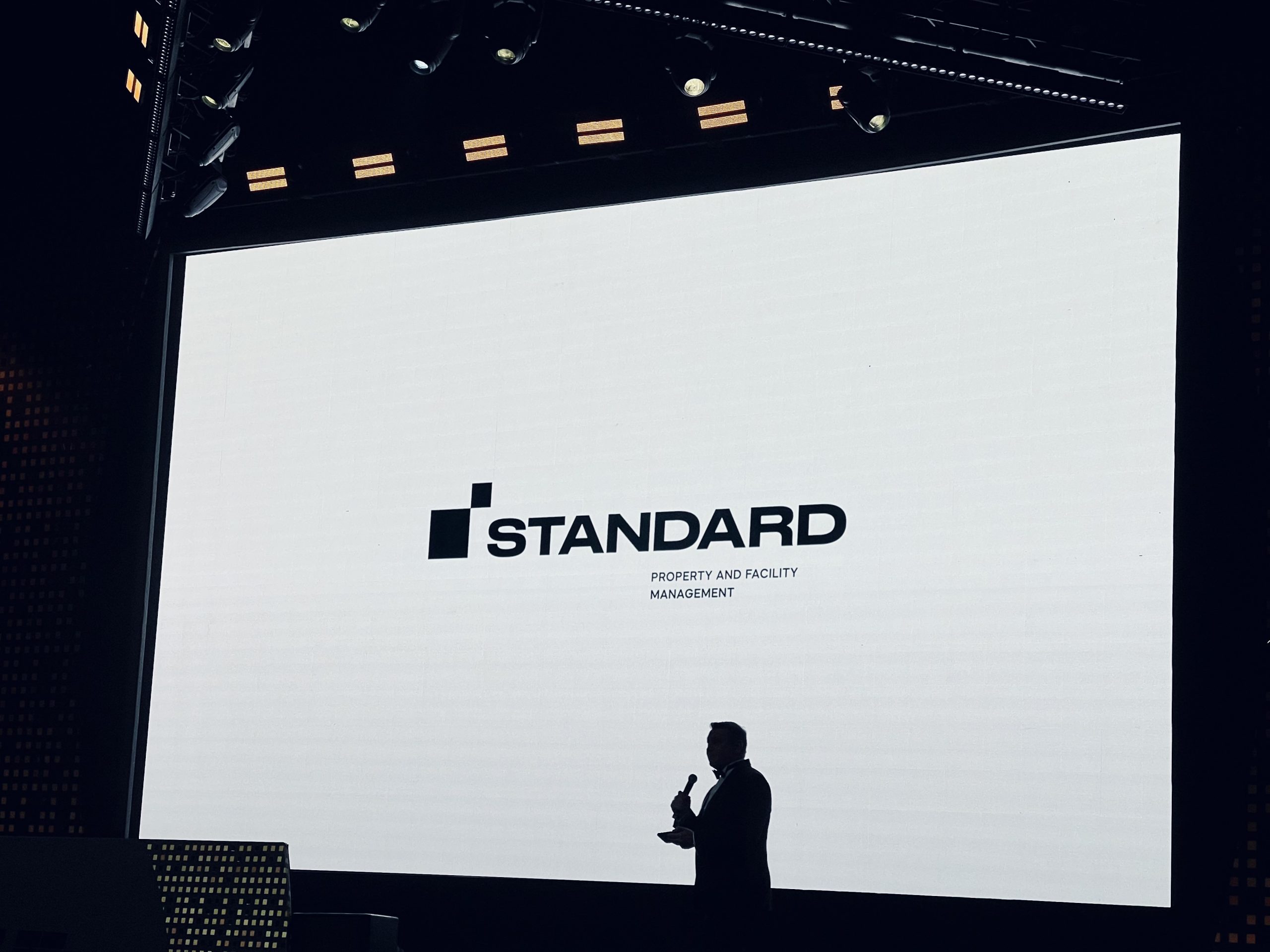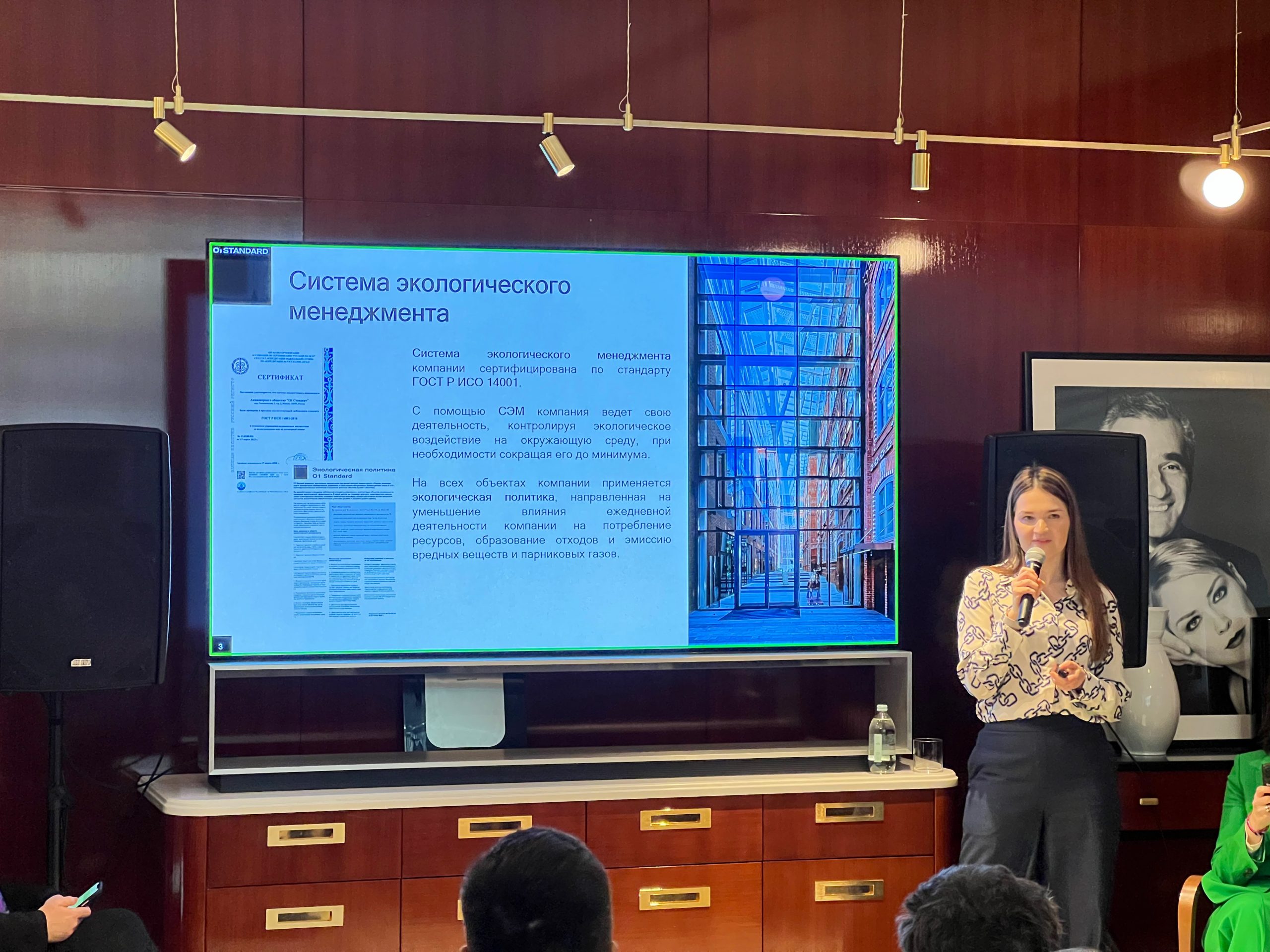O1 Standard’s COO Dmitry Sveshnikov discussed new trends in the commercial real estate management sphere, green technologies, new approaches to business and the company’s plans with the Arendator.ru information portal.
Dmitry, please tell us how the pandemic affected the management company market?
In a sense, the pandemic benefited management companies, accelerating industry digitalization and bringing management companies closer to their tenants, who are the end users of their services. A management company now performs significantly more functions than it used to: prior to the pandemic, it was solely responsible for the functioning of the business center as a whole, and the manager’s task was to make the facility operate normally. That was when the word “remote” was not yet a part of our everyday vocabulary, and working in an office was an absolutely natural phenomenon. Then the pandemic started, remote work became the norm, and by approximately the fall of 2020, many companies were forced to realize that their intention to bring at least some of their employees back into the office ran into a lack of understanding on their part. That’s when it became necessary to create a working environment that would not only be more comfortable than home, but also more inspiring. The building infrastructure, the range of services that can be obtained onsite, a variety of recreation areas, leisure opportunities, and simply the building’s convenience and aesthetic appeal are now the responsibility of the management company. Today, the office and the business center space are turning into tools for non-material employee motivation, which is what we mean by the growing role of the management company in the building. The management company should help tenants create comfortable conditions for conducting their business and bringing employees back into the office.
How would you motivate employees to return to the workplace?
Among the arguments in favor of the office is that it has become more than merely a workplace. A business center now offers more than a productive working atmosphere; it also provides additional infrastructure that allows office workers to solve their everyday problems without leaving the building: an ATM, a dry cleaner, a purchase pick-up point… We have already noted that some time ago the concept of a “comfortable office” came to imply a “green” office, but today, a “green” office is not just about the environment – it’s also about a user’s comfort. After all, a person spends 8-9 hours a day at the workplace. How does he feel there? The BREEAM certification system has solved this problem already, while FitWel and Well are even founded on the desire to ensure that a person is as comfortable as possible in the workplace.
I know that your company recently hired a certified “green” standards appraiser. Does the new reality dictate new terms, or do you just want to keep up with the trend?
Green certification and green standards have long been implemented in the West. In Russia, the pandemic forced companies to take a closer look at environmental standards to make the tenants feel comfortable and safe in the office. The O1 Standard portfolio manages the largest number of Breeam-certified business centers, and we monitor the trends in this sphere very carefully.
We have always sought to improve the environmental performance of the buildings under our management, and complying with the “green” standards is only a part of this process. The sustainability agenda of the business sector as a whole is expanding, so naturally, companies, especially public ones, pay close attention to the office and the building in which they operate and the extent of their compliance with international environmental performance standards. The building’s environmental certificate is gradually becoming if not a mandatory requirement, then certainly a factor that increases the attractiveness of a facility for class A and premium tenants. The next step in this direction is to evaluate an office for environmental performance. Many tenants are changing the workspace concept to meet the new sanitary and epidemiological requirements and to make it suitable for partially remote work. When implementing these projects, there is a demand for the introduction of green office technologies. We want to help our tenants solve the maximum range of tasks, and would ultimately like them to resolve all of their problems by working with us under a “one-stop” concept. Hiring a staff certified appraiser helps us both improve our own management standards and work with our tenants to implement projects of this sort.
I received a release from you about the successful completion of the Space 1 Balchug’s Fitwel certification. It became the first project in Russia to receive this certificate. Why did tenants require this specific credential?
Yes, indeed, we were the first in Russia to complete the Fitwel building certification process together with our partner, Cushman & Wakefield. Unlike BREEAM or LEED, it focuses entirely on assessing working conditions and their impact on the health and productivity of our employees. Most of the parameters assessed are directly related to eco-efficient technologies, but this standard assesses their impact on human beings. Thus, a Fitwel certificate can be considered an independent confirmation that people in this building will work in comfort and have a variety of food service, sports, leisure and recreation options, as well as that all temperature and acoustic standards will be met. All this helps to reduce stress and increase the level of employee satisfaction with working in the office.
Could you please tell us about how the company is doing in general?
We feel confident. In 2020, we started working with service offices – this requires an individual approach to drawing up a service plan. In January 2021, we took over the management of Tower A of the SkyLight business center, and prior to that, we successfully carried out technical due diligence in the process of selling the facility to a strategic investor. We also signed a contract for the maintenance of the multifunctional complex “Legend of Tsvetnoy.” We are actively expanding the business of servicing individual tenant offices: we won 43 tenders and received 2.5 times more client applications for additional services. The growth rate is preserved this year: the first quarter brought 7-8% more additional work than we had planned. However, the growth of our portfolio was mostly warranted by specific offices, rather than by whole buildings. We also plan to try our hand at managing premium residential projects with our partner – we have sufficient competencies for that.
You are called the “internal” management company of O1 Properties, how do you feel about that?
We often hear that everything came easy to us, since a major proprietor of class A office real estate transferred their entire portfolio under our management. But for some reason, everyone forgets what a colossal responsibility it is. We do remain a strategic partner of O1 Properties, but our portfolio is not limited to the properties of a single owner. A company’s success should be judged by the results of its work and the level of satisfaction of the owner and tenant companies in the building. In our case, 2020 results demonstrate that the tenant satisfaction level has increased in all our buildings, which is the biggest victory for us. Today we are developing as an independent company and, given the wide range of our team’s competencies, we can compete with many market participants. We believe in the success of our strategy, which is to work for the benefit of the building’s tenants, or even their employees, rather than for the building’s owner: if they are satisfied, then tenant loyalty grows. And, as you know, that increases the building’s investment value – the main KPI used by proprietors when choosing a management company.
Interviewed by Anastasia Kremenchuk
Source: www.arendator.ru





